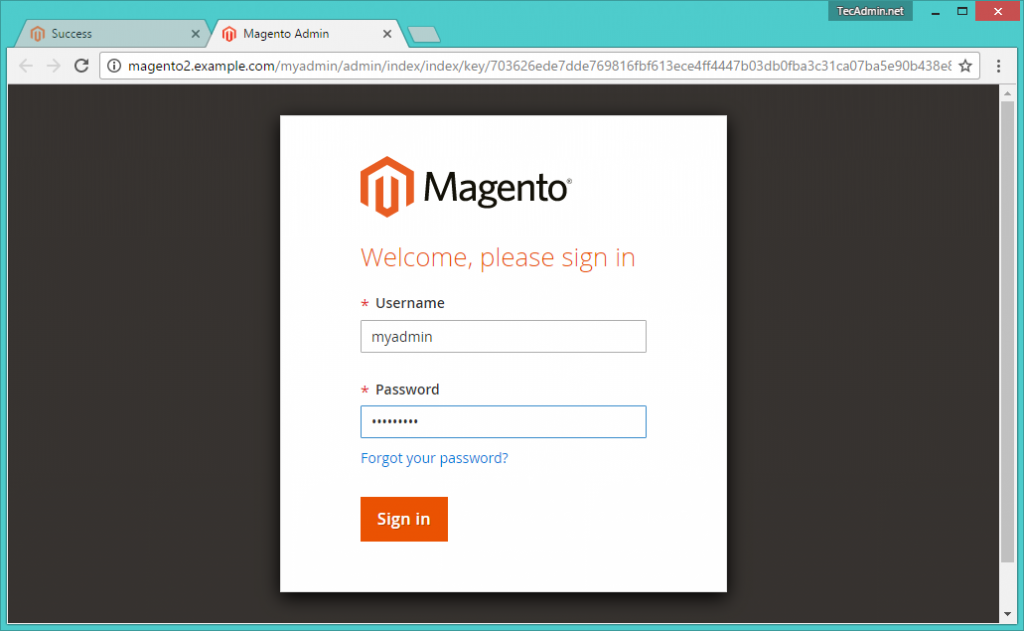Apache is a widely used open-source web server software that is capable of serving web content and managing incoming HTTP traffic. One of the features of Apache is its ability to include information about the server software in the HTTP headers of its responses. By default, Apache includes the version number of the server software in the “Server” header field of HTTP responses. However, this information can be used by attackers to identify the web server software and to search for vulnerabilities that are specific to that software version. As a result, it is important to hide the Apache version…
Author: Rahul
Magento is the best eCommerce software and solution for online services. Recently Magento team has released its new version Magento2 with lots of improvements changes and optimizations over Magento1. This tutorial will help you to install Magento2 on Ubuntu, Debian, and Linux Mint systems. Below are the system requirements for the Magento installation. Apache 2.2 or 2.4 with mod_rewrite module (or) Nginx >= 1.8. PHP 5.5 or later version. PHP 7.0 also supported. Required PHP-Modules – PDO/MySQL, mbstring, mcrypt, mhash, SimpleXML, curl, xsl, gd, ImageMagick 6.3.7 (or later) or both, soap, intl, openssl. Composer and Git 1. Install Requirements You…
Parse is a mobile backend as a service platform, owned by Facebook since 2013. In January of 2016, Parse announced that its hosted services would shut down in January of 2017. So if you are Parse.com user, you will have to move all your services to own servers. This tutorial will help you for install Parse server on Ubuntu 18.04 & 16.04 LTS operating system. Step 1 – Install Node.js First, you need to node.js ppa in our system provide by the nodejs official website. We also need to install python-software-properties package if not installed already. sudo apt-get install build-essential…
Parse Dashboard is a standalone dashboard for managing your Parse apps. You can use it to manage your Parse Server apps and your apps that are running on Parse.com. Requirements: Make sure your server met following dependencies. If you don’t have installed any of below, use tutorials install Nodejs and install Parse server on your system. Node.js version >= 4.3 Parse Server version >= 2.1.4 Install Parse Dashboard At this step you must have Nodejs and npm installed on your system. Now use following command to install parse-dashboard using npm. npm install -g parse-dashboard After successful installation of parse-dashboard, Now…
Sendmail is one of the oldest and most popular mail transfer agents (MTAs) available on Unix-based systems. It’s highly customizable, which makes it a preferred choice for many professionals, but this flexibility can also make it seem daunting. A key feature of Sendmail is its ability to relay emails through a remote SMTP server, which we’ll delve into here. Relaying emails is a process where the email delivery is routed through different servers rather than going directly from the sender to the recipient. This practice can help optimize the email delivery process and overcome deliverability issues. Prerequisites Before we get…
Git is a popular version control system that is used by developers to track changes made to their code. Branches are an important aspect of Git, as they allow developers to work on multiple features or bug fixes in parallel without affecting the main codebase. In Git, you can create two types of branches: local branches and remote branches. Local branches are branches that exist only on your local machine, whereas remote branches are branches that exist on a remote repository, such as Github, BitBucket, AWS CodeCommit, or Gitlab. Remote branches are useful when you want to collaborate with other…
Git is a popular distributed version control system that is widely used for software development and other collaborative projects. One of the key features of Git is its ability to work with remote repositories, allowing you to share code and collaborate with others on your projects. In this article, we will discuss how to list and checkout remote branches in Git. 1. Listing Remote Branches To list all of the remote branches in your Git repository, you can use the following command: git branch -r This command will display a list of all the remote branches that are currently available…
PHP, a versatile server-side scripting language, is a popular choice for web development due to its simplicity and extensive functionality. One of these essential functionalities is reading file content into strings, which can be achieved using the `file_get_contents()` function. This article will guide you through the understanding and usage of this significant PHP function. Understanding file_get_contents() The `file_get_contents()` function is a built-in PHP function used for reading data from a file, a URL, or an HTTP or FTP stream. When invoked, the function reads the entire file into a string. It is an effective method for file reading due to…
The fread() function is used to read from a file. It allows you to read from any stream or file, as long as it’s a binary stream. fread() reads the specified number of bytes into the given array, starting at the position in bytes. Let’s take a look at how the PHP fread() function works and see some examples of how to use it. Continue reading to learn more. How to use PHP fread() function? The fread() function is used to read from a file. It allows you to read from any stream or file, as long as it’s a…
PHP fgets() function is used for reading a single line from a file. This function takes two arguments as described below. 1. File specifies the filename to read content 2. Length Optional parameter specifies the number of bytes to read from the file. Syntax PHP fgets() function uses the following syntax. fgets(file, length) Example – Read a single line Below are two examples of a reading single line from a file. Use this example to read the complete first-line content from a file.
1 2 3 4 5 6 | <?php $fn = fopen("/var/data/myfile.txt","r"); $result = fgets($fn); echo $result; fclose($fn); ?> |
Instead of a line, you can also define the number of bytes to read from a…



